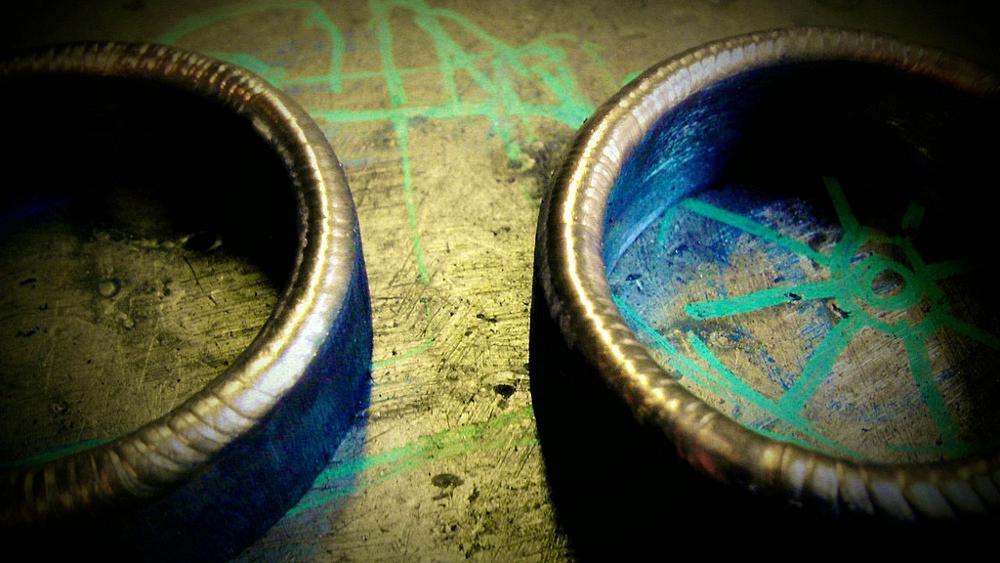Owner, Brown Dog Welding
- FMA
- The Fabricator
- FABTECH
- Canadian Metalworking
Categories
- Additive Manufacturing
- Aluminum Welding
- Arc Welding
- Assembly and Joining
- Automation and Robotics
- Bending and Forming
- Consumables
- Cutting and Weld Prep
- Electric Vehicles
- En Español
- Finishing
- Hydroforming
- Laser Cutting
- Laser Welding
- Machining
- Manufacturing Software
- Materials Handling
- Metals/Materials
- Oxyfuel Cutting
- Plasma Cutting
- Power Tools
- Punching and Other Holemaking
- Roll Forming
- Safety
- Sawing
- Shearing
- Shop Management
- Testing and Measuring
- Tube and Pipe Fabrication
- Tube and Pipe Production
- Waterjet Cutting
Industry Directory
Webcasts
Podcasts
FAB 40
Advertise
Subscribe
Account Login
Search
In praise of SiB
- By Josh Welton
- October 1, 2015
Silicon bronze (SiB) has become the favorite rod in my arsenal. It’s been around for a loooooong time, and yet every time I post a sculpture or a weld I did using it, I get a chorus of “What kind of filler are you using?” And after I answer, the chorus sings, “What? Why? How?”
SiB is a pretty versatile filler material. With a TIG torch you can use it on a lot of junky stuff that would cause traditional steel filler to snap crackle and pop. In my art I love it for attaching zinc-coated nuts and bolts to each other. The SiB melts at a lower temperature than the coating, so it doesn’t “explode” when welded.
Of course, it’s not exactly welding. You’re not joining metal to metal with a similar rod, you’re technically brazing—electric brazing.
The lower melting point makes it ideal for joining galvanized metal, because you burn up less of the coating. It’s also great for sheet metal work because lower melting temps equal less heat equals less warping, and you can still sand and paint it.
SiB actually has outstanding wear properties too. My dad had some worn cast-iron gears that needed the teeth built up. I didn’t have the time to do a preheat/postheat, so I decided to “weld” it cold instead, getting the material just warm enough to take the SiB. He filed them down to fit, and they’ve been working perfectly in his snowblower for the past three or four seasons.
It’s also terrific for joining dissimilar metals. For my sculptures, it opened up a new world to me years ago when I found I could use it to attach copper to steel. The contrast in colors, the tactile difference in materials, it all adds to the character of the pieces.
In reality, I do go back and forth between calling it TIG brazing and welding. It’s too easy to call it welding, because it’s essentially the same process as GTAW. The differences in how the filler reacts to the base metal are subtle. You have a smaller window for the rod to melt into the puddle; if you’re too cold the joint won’t accept the filler and the end will ball up. If you’re too hot you melt into the base metal too much and find out the hard way why it’s called a “hot cracking” rod.
Melting into the base metal a little is OK, but excessive melting will fracture the joint down the middle. But overall, it’s a heckuva lot like TIG welding steel when it comes to machine settings, consumables, and hand-eye coordination. The filler is pretty much the only variable that changes from a process standpoint.
I should note that while I typically use DC negative polarity (just like I’d use on steel) to weld/braze with SiB, you can use AC. Alternating current’s cleaning process helps when brazing some materials.
An important thing to keep in mind when using SiB rod is that it’s made up of a lot of stuff, chemically speaking. There’s a little lead, a little zinc, a little of this, and a little of that. The fumes don’t leave you feeling great. It’s not as bad as brazing bronze rod using flux with an oxyacetylene rig, but it’ll give you a nice headache. A fume extractor is ideal, but even a box fan to suck away the nasty fumes is a smart plan of action.
If you can TIG weld and want to try TIG brazing, just grab some SiB and go to town. You’ll notice the slight differences in laying a bead that I mentioned earlier, but overall it’s a pretty simple process.
All images courtesy of Brown Dog Welding.
subscribe now

The Welder, formerly known as Practical Welding Today, is a showcase of the real people who make the products we use and work with every day. This magazine has served the welding community in North America well for more than 20 years.
start your free subscriptionAbout the Author

About the Publication
- Stay connected from anywhere

Easily access valuable industry resources now with full access to the digital edition of The Fabricator.

Easily access valuable industry resources now with full access to the digital edition of The Welder.

Easily access valuable industry resources now with full access to the digital edition of The Tube and Pipe Journal.
- Podcasting
- Podcast:
- The Fabricator Podcast
- Published:
- 04/16/2024
- Running Time:
- 63:29
In this episode of The Fabricator Podcast, Caleb Chamberlain, co-founder and CEO of OSH Cut, discusses his company’s...
- Industry Events
16th Annual Safety Conference
- April 30 - May 1, 2024
- Elgin,
Pipe and Tube Conference
- May 21 - 22, 2024
- Omaha, NE
World-Class Roll Forming Workshop
- June 5 - 6, 2024
- Louisville, KY
Advanced Laser Application Workshop
- June 25 - 27, 2024
- Novi, MI


































